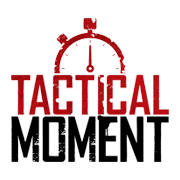“Buy a shotgun… buy a shotgun,” he said. Well, ok… but if you’re considering using it for personal defense, skip the double-barreled models.
So, what DO you look for in a defensive shotgun?
First, start with a pump-action 12 gauge or a 20 gauge for smaller-framed people. Better to be able to control it than to exchange accuracy and speed for a higher projectile count per round fired. Next, it needs to hold a sufficient quantity of rounds – typically 6 or more in the magazine tube. You don’t need to add any of the quad-rotating magazines or odd after-market magazines to it… just get your shotgun with a magazine barrel that is flush with, or extends slightly past, the 18″ barrel.
InSights’ chief instructor, Greg Hamilton, recommends the Remington 870 police model with 18″ barrel, full magazine tube, and Ghost Ring sights. The Remington 11-87 police model also works for those who don’t want a pump.
Now, what else should you have on your shotgun?
For more rounds, your shotgun will need to accommodate some sort of side-saddle. Preferably set it up with one of the Velcro-backed options and use tabs that hold 4-6 shells. If you can make your tabs the size of standard 30-round AR mags they will store easily in your gear. You also need to add a sling which can be anything from a simple carry-strap to your favorite tactical sling. Finally, your defensive shotgun should have a good light on it that emits 200 lumens or more, and Wilson Combat sights or Ghost Ring sights.
A standard stock is generally best, but a shorter stock may be well advised for some people. Do not replace the stock with a pistol-grip style and, while after-market accessories are plentiful, generally avoid them. Remember, perfection isn’t reached when there is nothing left to add, it’s reached when there is nothing left to take away.
As with any self-defense tool, training with a shotgun is very important. Contrary to common belief, you DO still have to aim with a shotgun because at defensive distances the pattern of the projectiles is only several inches in diameter. Also, as is for all firearms, malfunctions and failures happen and you must be able to effectively and efficiently clear them to keep your weapon functional. Similarly, the ability to reload effectively, while under stress and moving, and transitioning between shotgun and pistol are also important skills to have.
Given the current situation with handgun and rifle ammunition costs still being high, now is a great time to be training with your shotgun. Bird shot, buck shot, and slugs are all all available and have remained relatively affordable throughout the present inflation of ammunition prices.
So, sure… “buy a shotgun.” Just be sure to save the double-barreled models for the skeet range and keep your tactical shotgun for personal defense.
Stay Safe!
Content by Greg Hamilton
Written by Doug Marcoux
